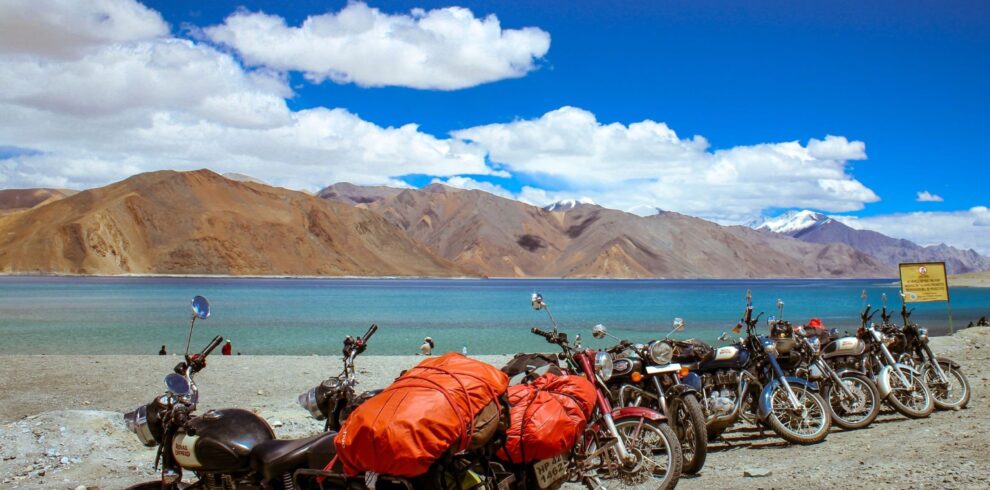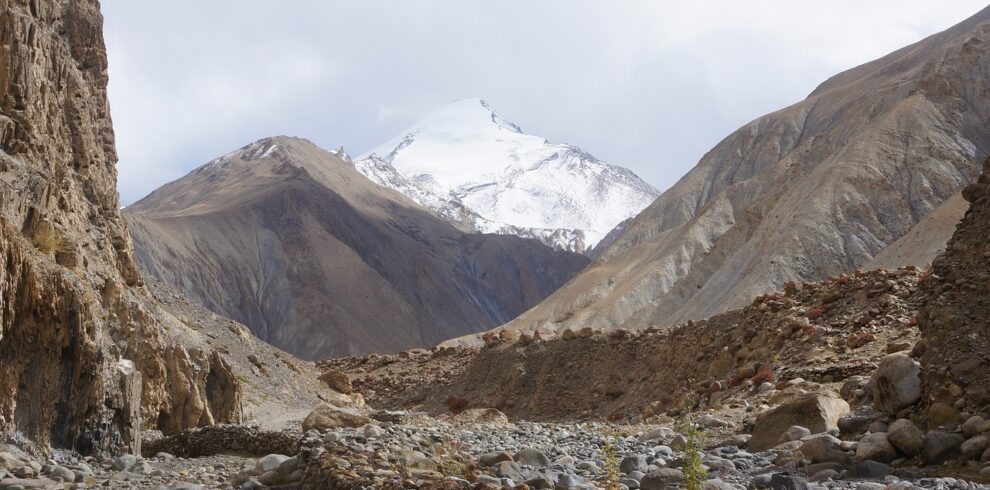Ladakh
“Julley” – Welcome to Ladakh
Ladakh made from two words “La” means Pass and “Dakh means numerous, hence Ladakh means “Land of High Passes”. Also known as “Moonland” for its unique lunar landscape.
Ladakh is sandwiched between two vast mountain systems, the Karakoram to the north and the Himalaya to the south. Covering an area of about 60,000 sq km and ranging in elevation from 2600m to 7070 m, it is the largest and highest district in India. The Indus valley is the Ladakh heartland, with the highest population density, and large amounts of agricultural land. North of the Indus valley is the Ladakh range, on the other side of which is the Shayok, and Nubra valleys. South of the Indus is the Stok range, clearly visible from Leh. On the other side is the Markha valley, a popular trekking destination. Farther south-west is a series of minor ranges and then uninhabited valleys we come to Zangskar, with the Kargyak and the Stod Rivers joining at Padum, to form the Zangskar River which bucks the trend and flows north through a narrow gorge to join the Indus. With all these geographical abundances Ladakh has an enormous picturesque environment.
Flora and fauna in Ladakh are more similar to those of Tibet than to the main Himalaya and are a product of the dry climate, cold winters and short growing season. The animals of Ladakh have much in common with the animals of Central Asia generally, and especially those of the Tibetan Plateau.
This land was primarily inhabited by nomads who brought their yaks and sheep. It is also a connecting pilgrimage route from India to Mount Kailash in Tibet and hence many Buddhist pilgrims settled here in this Indus valley permanently and brought Buddhism which emerged as the main religion in the region.
For many centuries, the kings of Ladakh ruled over a vast Kingdom from Kashmir to Tibet which is dotted with many forts and large monasteries.
Because the approach of Ladakh to the eastern and from the western world it became a popular trade route.
The old caravan routes led westward through Kashmir to the Silk roads, northward across the Karakorum Pass to Central Asia, eastward across the Chang-thang highlands to Tibet and China, and southward through present-day Himachal Pradesh to the plains of India.
Ladakh was frequently attacked from the west by Muslims and from the east by Tibetans. Later Namgyal dynasty strengthened the region and extended it to Nepal. Leh was built as a new capital. During the 19th century, Ladakh was invaded by the Dogra army from Jammu and became part of the state of Jammu and Kashmir.
Today in Ladakh the majority of the population is Buddhist (77.3%) which is followed by Muslim (13.8%) and Hindu (8.6%)
On 31st October 2019, Ladakh was separated from the rest of Jammu and Kashmir and became an independent state (Union Territory). Ladakh is divided into two districts: Leh district and Kargil district (which includes Zanskar).
Ladakh receives no monsoon due to the barrier due to Great Himalaya which make idle to visit when the entire India wet. In Ladakh the annual average rainfall received in Leh is 100 mm. In the summer, the temperature reaches 25°C and it drops down to -15°C in winter. The high passes are closed during winter due to heavy snowfall.
To reach Ladakh one can either fly or can drive. Flying is the better option as it reduces time but you have to acclimatize minimum for two days in Leh to avoid high altitude sickness. There are many flights from Delhi in the morning to Ladakh and back. In summer it is very convenient but it winters it all depends on the weather conditions. By road one can reach Leh either from Srinagar or Manali highway.
Bike tours
Ride on the two wheels. If you want more adventurous and flexible trips then bikes are the right choice for you. We provide you bikes for the city tours and also for the adventure journey in the mountains of Uttarakhand, Spiti and Lahaul and most famous road journey of Manali to Leh. Click below and ride on your dream journey.
Culture and Heritage








